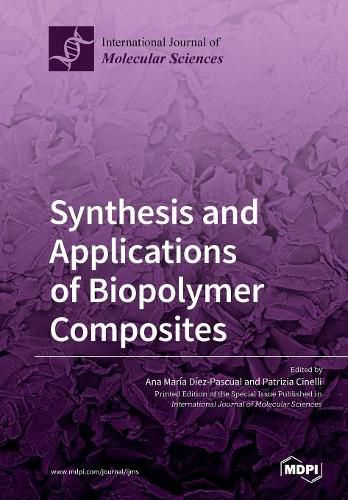Readings Newsletter
Become a Readings Member to make your shopping experience even easier.
Sign in or sign up for free!
You’re not far away from qualifying for FREE standard shipping within Australia
You’ve qualified for FREE standard shipping within Australia
The cart is loading…






This title is printed to order. This book may have been self-published. If so, we cannot guarantee the quality of the content. In the main most books will have gone through the editing process however some may not. We therefore suggest that you be aware of this before ordering this book. If in doubt check either the author or publisher’s details as we are unable to accept any returns unless they are faulty. Please contact us if you have any questions.
This book, as a collection of 17 research articles, provides a selection of the most recent advances in the synthesis, characterization, and applications of environmentally friendly and biodegradable biopolymer composites and nanocomposites. Recently, the demand has been growing for a clean and pollution-free environment and an evident target regarding the minimization of fossil fuel usage. Therefore, much attention has been focused on research to replace petroleum-based commodity plastics by biodegradable materials arising from biological and renewable resources. Biopolymers–polymers produced from natural sources either chemically from a biological material or biosynthesized by living organisms–are suitable alternatives for addressing these issues due to their outstanding properties, including good barrier performance, biodegradation ability, and low weight. However, they generally possess poor mechanical properties, a short fatigue life, low chemical resistance, poor long-term durability, and limited processing capability. In order to overcome these deficiencies, biopolymers can be reinforced with fillers or nanofillers (with at least one of their dimensions in the nanometer range). Bionanocomposites are advantageous for a wide range of applications, such as in medicine, pharmaceutics, cosmetics, food packaging, agriculture, forestry, electronics, transport, construction, and many more.
$9.00 standard shipping within Australia
FREE standard shipping within Australia for orders over $100.00
Express & International shipping calculated at checkout
This title is printed to order. This book may have been self-published. If so, we cannot guarantee the quality of the content. In the main most books will have gone through the editing process however some may not. We therefore suggest that you be aware of this before ordering this book. If in doubt check either the author or publisher’s details as we are unable to accept any returns unless they are faulty. Please contact us if you have any questions.
This book, as a collection of 17 research articles, provides a selection of the most recent advances in the synthesis, characterization, and applications of environmentally friendly and biodegradable biopolymer composites and nanocomposites. Recently, the demand has been growing for a clean and pollution-free environment and an evident target regarding the minimization of fossil fuel usage. Therefore, much attention has been focused on research to replace petroleum-based commodity plastics by biodegradable materials arising from biological and renewable resources. Biopolymers–polymers produced from natural sources either chemically from a biological material or biosynthesized by living organisms–are suitable alternatives for addressing these issues due to their outstanding properties, including good barrier performance, biodegradation ability, and low weight. However, they generally possess poor mechanical properties, a short fatigue life, low chemical resistance, poor long-term durability, and limited processing capability. In order to overcome these deficiencies, biopolymers can be reinforced with fillers or nanofillers (with at least one of their dimensions in the nanometer range). Bionanocomposites are advantageous for a wide range of applications, such as in medicine, pharmaceutics, cosmetics, food packaging, agriculture, forestry, electronics, transport, construction, and many more.